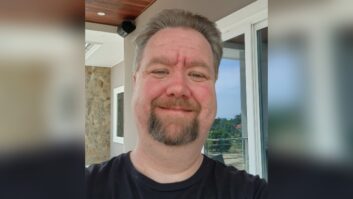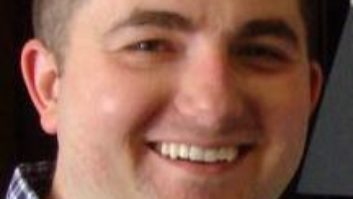
David Honig
David Honig is the president emeritus and senior advisor of the Multicultural Media, Telecom and Internet Council; Marcella Gadson is the director of communications of the Multicultural Media, Telecom and Internet Council. Radio World a variety of viewpoints on issues facing the radio broadcast industry. Comment on any article or send a letter to Radio World.
Marcella Gadson: Why is diversity in broadcasting so worthy of our attention?
David Honig: Fifty years ago, the United Church of Christ petitioned the FCC for a rule barring racial discrimination in broadcasting. At the time, the nation was in the midst of its transition to universal first class citizenship. Few women, and virtually no people of color, owned or worked in broadcast stations. Today, a diverse broadcasting industry unites the country, maintains us as one people, helps us understand one another, and allows us to function as a multicultural democracy. None of this would be possible without diversity in broadcasting. And diversity in broadcasting is made possible by two things: the FCC’s equal employment (EEO) rule, and broadcasters’ voluntary efforts to do more than the letter of the rule minimally requires.
Gadson: What policies, societal norms, and institutional practices have contributed to the lack of diversity in broadcasting?
Honig: The single greatest impediment to diversity in broadcasting is the “old boy network” through which job openings in a homogeneous workplace are filled almost entirely by word of mouth; and wide posting of jobs is performed only to go through the motions. In this way, a homogeneous workplace replicates itself across generations. Since 1980, the FCC has recognized this practice as inherently discriminatory — yet it has not brought an enforcement case against the practice since 1998. That’s got to change.

Marcella Gadson
Gadson: What is the history of the EEO rule, and what does the FCC need to do to enforce both the letter and the spirit of the rule so it has a positive impact on diversity in both broadcasting employment and ownership?
Honig: In 1969, the FCC began to require recruitment broad enough to reach all qualified applicants, including minorities and women. In 1998 and 2001, decisions by the D.C Circuit of the U.S. Court of Appeals invalidated parts of the rule, and the FCC had to readopt the rule in a weaker form. The commission could have continued to take action against some of the worst discriminatory practices, but it chose not to do so. Instead, it has gone after broadcasters just for failing to recruit broadly, even if the broadcaster’s staff was already very diverse. These are unfortunately cases where the letter of a rule was followed, while its intent — in this case, promoting diversity — was ignored. Word of mouth recruitment from a diverse workplace may not be the most businesslike method, but it is not discriminatory or wrong, and the FCC has no business doling out forfeitures — sometimes for over $15,000 — for this alleged rule violation. Instead the FCC should focus its attention on actual bad apples, of which there are plenty.
Gadson: Last month, the FCC issued a declaratory ruling allowing the sole use of internet sources for EEO recruitment, which MMTC endorsed with three caveats to ensure that the ruling would not impede broad recruitment to diverse applicants. Does the ruling accomplish this goal?
Honig: MMTC’s three caveats were that online postings (1) should be easy to find; (2) should be posted before a candidate has been preselected; and (3) should not be a substitute for cultivating job referral relationships with resources such as colleges, community groups, and training programs that are traditionally the career paths for minorities and women to enter the industry. The commission didn’t require broadcasters to observe these caveats, but it did say that performance of them is good evidence of rule compliance. Broadcasters thus would be well-advised to observe them.
Gadson: MMTC’s comments in the proceeding also suggested that the commission should conduct a comprehensive, holistic review of its EEO compliance program. Is this action still necessary?
Honig: Absolutely. The internet recruiting issue was but one modest unresolved element of EEO administration that has been waiting for action in the EEO Docket (MB 98-204) since 2004. The FCC needs to revisit several other issues. For example, what constitutes a violation of the rule? How should broadcasters provide equal opportunity for training and promotions? Is the audit program effective? How can bad apples be held to account, and how can the FCC stop punishing those who have done nothing wrong?
Gadson: The FCC’s ruling extended its internet recruitment proposal beyond terrestrial broadcasting to include multichannel video programming distributors (MVPDs, including cable systems, DISH, and DirecTV). What is the significance of this, and what impact will it have on the industry?
Honig: The FCC is wisely treating all industries the same when it comes to issues like civil rights. That way, when broadcasters are expected to go the extra mile to recruit broadly and diversify their workforces, cable and satellite companies must do the same. We would add telephone companies, wireless companies, and broadband providers; as well as “edge” or high-tech information services companies, which often have EEO records far worse than those of most broadcasters
Gadson: What additional steps should the FCC take to improve broadcasting diversity?
Honig: Oh, where to begin! The most important thing the FCC should do is to identify and crack down on bad apples that are a stain on our business — the companies that just will not hire or promote minorities or women. These companies need to be brought kicking and screaming into the 20th century. To do that, the FCC should crack down on those that recruit primarily by word of mouth from homogeneous workplaces — a practice the FCC has long recognized as being inherently discriminatory.
Beyond that, the FCC’s audit program needs to be significantly beefed up. Too few stations are audited, and almost no one ever fails an audit.
Gadson:< Are there any other policies or trends that have improved or harmed the outlook for broadcast employment and ownership?
Honig: Broadcast employment is the primary route to broadcast ownership. More companies should be encouraged to establish incubators to help senior managers transition into owners. Last month, the FCC announced that it is going to charge its new Advisory Committee on Diversity and Digital Empowerment with the task of designing an incubator program. Perhaps this effort will generate a creative mechanism to design an employment career path that extends from the water cooler to the executive suite.
Gadson: What effects has the exclusion of people of color from ownership of the airwaves had on our nation as a whole? What will we see come as a result of increased diversity?
Honig: The EEO rule gave admission to broadcasting to the two-thirds of our population who are not white men. In doing that, the rule injected into the industry an enormous dose of innovation, creativity, relevance, and competitive strength. As our population continues to diversify, the rule that keeps the industry equally open to all remains vital to broadcasting’s economic success. Of course, there’s another reason we like the rule: it reminds us to operate with good character as stewards of public property — the radio frequency spectrum.






